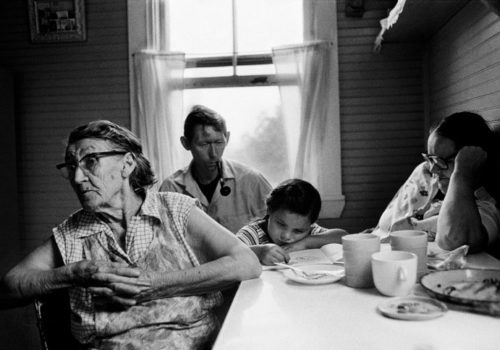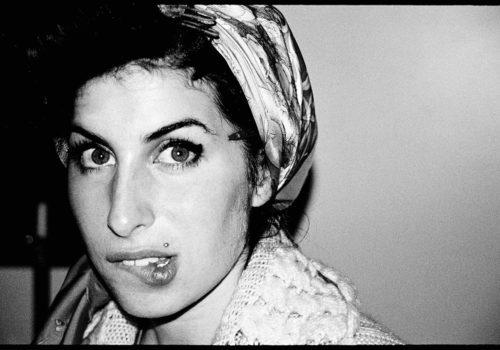In the US, it is a pretty safe bet to say the least understood people are the white underclass and the white rural poor. These are people who live completely outside the American Dream and have no obvious impediment to their upward mobility such as skin color. They can evoke a visceral reaction of judgment from others because their very existence is a huge threat to the dwindling middle class in America. The myths of middle class culture have to do with self-discipline, goal setting, independence and the ability to leave the group if necessary to “get ahead”. But there is a whole swath of people, mostly living in rural areas, who don’t want to leave their family, their ties and their history to get a job in the city. There is no way for them to get ahead and they know it and tend to just live with that knowledge. They have to contend with the failed social safety net, and economic policy that flies far over their heads.
So, this body of work incubated by Steven Rubin over two decades is a happy antidote to the prejudice against the rural poor. In 1982, with a camera but no car and little money, Steven Rubin hitchhiked around Maine, heading inland from the coast and finding his way to this remote region where the photographs in this exhibit were taken, living for a time in an abandoned cabin without electricity, heat, or running water. When the winter proved too cold, he accepted a bare mattress in the corner of a family’s mobile home. He eventually became a fixture in the community and they embraced him, at least for a time. Over the years he returned for numerous visits until the early 2000’s.
As a collaborator on two projects about rural America (Coal Hollow and Valley of Shadows and Dreams), I have seen a great deal of rural poverty and many photographic images of those folks. Steven’s work actually made me feel almost warm and fuzzy. The images are wonderfully pure – classic black and white documentary. The depth and quality of this portraits (and they are all portraits of some kind) hold up to the best of them: the silver gelatin prints look lush and nicely done. The frustrating thing about this show is that a narrative arc seems to be missing. This is like a family album of random occasions. I find myself wanting more substance. What happened to this family over two decades? How are these people connected – a bit more information would be great.
The best part of these images is that we really feel the breadth and depth of their lives and we feel that we are IN those lives. We see families living all the same moments in life that every family lives: a moment of courting on top of a stack of wood, a toddler standing on a chair in the kitchen, a girl blowing bubbles, a boy fixing his bike. We also see the anguish after a marital fight, the aftermath of a suicide attempt, but none of this is overshadowed by the imposition of a political agenda or those “middle class values”. If you squint your eyes and ignore the harsh consequences of ingrained multigenerational poverty you see small town life that now only exists in our collective memories. In fact, there is a little bit of the Norman Rockwell here, including those comic, kitschy moments: the boy lying on the stair rail while waiting for his mother to return looks like a rag doll; the image of Carroll working on his skidder shows the hood of the truck closed over Carroll’s head while his, rather large, backside hangs out. You will enjoy this work and learn a lot about what living poor in Maine is all about. There are worse things in life than struggling to make do with nothing while in the bosom of your family and community. You could be all alone.
Vacationland – Steven Rubin
April 28 – May 26, 2012
Drkrm
727 S. Spring Street
Los Angeles, CA 90014
T :
323.271.5635
















